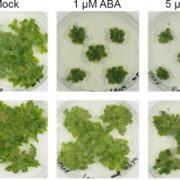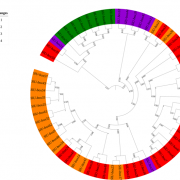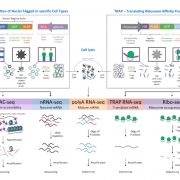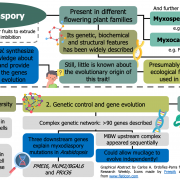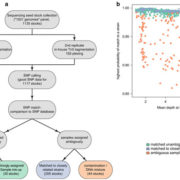Footprints of parasitism in the genome of the parasitic flowering plant Cuscuta campestris (Nature Comms)
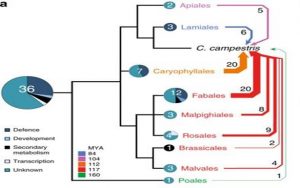 Even without knowing a lot about parasitic plants, you can probably guess some of the insights that come from the first parasitic plant genomic sequence. Because parasitic plants get their nutrients from another organism (functionally, they become heterotrophic), you might expect they would gradually lose the genes needed for nutrient uptake and for photosynthesis. You would be right; Vogel et al. show exactly that with their analysis of the genome of Cuscuta campestris (dodder). They also give evidence that dodder has acquired some genes horizontally, through its intimate association with its hosts. The dodder genome includes “64 novel high confidence horizontal gene transfer candidates from at least 32 different donor sequences,” and many of these genes were shown to be transcribed and upregulated at the site where the parasite interfaces with the host, suggesting a role in the infection process. (Summary by Mary Williams) Nature Comms. 10.1038/s41467-018-04344-z
Even without knowing a lot about parasitic plants, you can probably guess some of the insights that come from the first parasitic plant genomic sequence. Because parasitic plants get their nutrients from another organism (functionally, they become heterotrophic), you might expect they would gradually lose the genes needed for nutrient uptake and for photosynthesis. You would be right; Vogel et al. show exactly that with their analysis of the genome of Cuscuta campestris (dodder). They also give evidence that dodder has acquired some genes horizontally, through its intimate association with its hosts. The dodder genome includes “64 novel high confidence horizontal gene transfer candidates from at least 32 different donor sequences,” and many of these genes were shown to be transcribed and upregulated at the site where the parasite interfaces with the host, suggesting a role in the infection process. (Summary by Mary Williams) Nature Comms. 10.1038/s41467-018-04344-z


